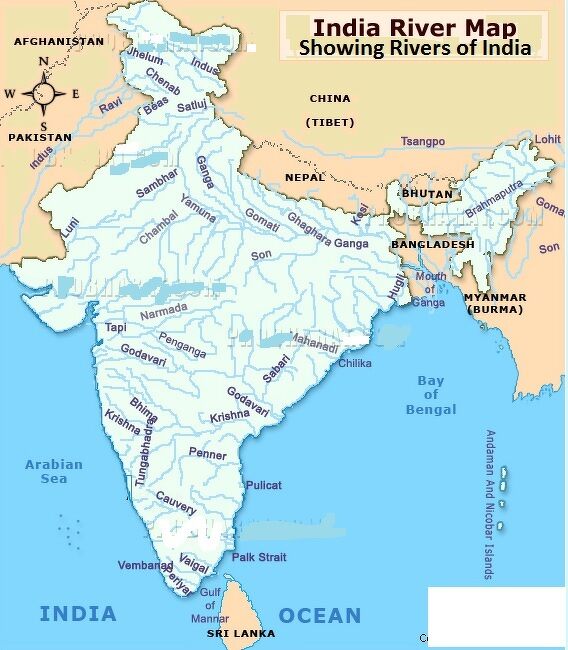

What are the essential characteristic features of Himalayan Rivers? How are they different from Peninsular Rivers?

Model Answer
Model Answer
In India, the rivers are broadly classified as North Indian rivers/Himalayan Rivers and Peninsular Rivers. Major North Indian Rivers are Ganga, Indus, Brahmaputra and their tributaries and Peninsular rivers are Mahanadi, Godavari, Krishna, Cauvery, Narmada and Tapi and their tributaries. Characteristics of Himalayan Rivers –
- Flow and regime – Since these rivers are fed by both melting of snow and precipitation they flow throughout the year. They tend to have lesser regime fluctuations.
- Geomorphic features – Stage of the river: Many of the Himalayan River systems are in their Youth and have erosional activity dominating with simultaneous upliftment of Himalayas. Deep gorges, I, V-shaped valleys are formed in this stage. - After entering plains, they form depositional features like oxbow lakes, flood plains, braided channels and deltas near the river mouth. They display strong meandering tendency. - These rivers bring more sediments and silt due to the sedimentary characteristics of Himalayas.
- Drainage system- Many of the Himalayan Rivers like Indus, Brahmaputra, Kosi, Sutlej are antecedent river systems. Many of the rivers also follow a Consequent pattern of drainage according to the slope of the relief. Besides Trellis pattern (flow of tributaries is parallel) is seen in the Ganga river system.
- Flooding events: Due to higher rainfall and a huge amount of sediments carried by rivers leads to frequent flooding and devastation. Ex- Kosi (sorrow of Bihar) has been known for frequently changing its course and resultant flooding.
- Some of the rivers originating in central highlands flow towards the North and become tributaries of the Himalayan river system. Tributary of Yamuna, Chambal forms landform like Ravines in its path. These are largely absent in Peninsular river system.

Difference between Himalayan and Peninsular rivers:
|
Characteristics |
Himalayan |
Peninsular |
|
Origin |
Himalayas |
Peninsular highlands |
|
Regime and Flow |
Perennial and lesser fluctuations |
Seasonal and Higher regime fluctuations |
|
Stages of life |
Mostly in their Youth stage |
Most of the rivers are in the mature to the old stage |
|
Geographic features |
Erosional features like V-shaped valley, meanders are formed. Depositional features like Deltas are formed |
Erosional features are U shaped Valley. Meanders are generally absent. Depositional features are Deltas of Godavari, Krishna and Estuaries of Narmada, Tapi |
|
Geomorphic characteristics |
Bedrocks of Himalayan rivers are soft, sedimentary and easily erodible. |
Bedrocks of peninsular rivers are Hard, resistant and not susceptible to erosion |
|
Drainage Basin characteristics |
Large basins, Antecedent river systems |
Relatively smaller basins and subsequent, Superimposed drainage system |
|
Impact of climate change |
Himalayan river system would be affected by climate change. Initially the flow would be higher due to increased melting of snow and ice. However, later it would reduce when the glaciers recede. |
Peninsular river system may have greater variations in water availability. Impact of climate change on Monsoons and precipitation levels would affect these river systems. |
Conclusion
North Indian Rivers and Peninsular river system are important water assets that are used for drinking purposes, irrigation, navigation and power generation. Ongoing climate change and global warming are likely to have an impact on the river systems of India by affecting their regimes and thus putting stress on our water assets.

